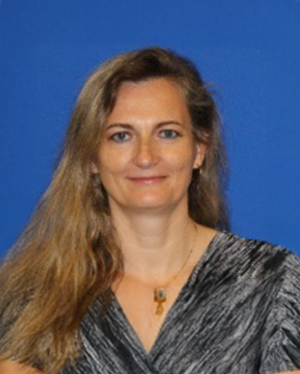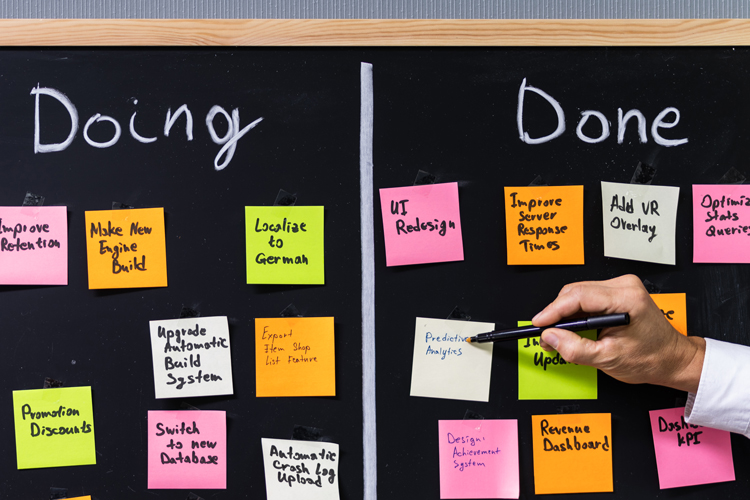The Agile Transformation Office (ATO) is a team of IT Professionals who manages the portfolio of IT projects at NSU. The team works to ensure that the projects and programs align with the University's vision, mission, and strategic goals.
Mission
To deliver High Quality Enterprise OIIT Projects, Products and Services that maximize visibility, increase productivity, and achieve new insights by automating, consolidating, and integrating to the most innovative OIIT solutions.
Vision
Leverage Agile Framework to transform the efficiency, impact, speed, and delivery of Projects throughout OIIT through Communication and Continuous Improvement of Processes that results in a well-defined Customer Engagement Model.
Goals and Expected Business Value
- 100% Agile Immersion throughout all of OIIT.
- Ensure the governance of OIIT project efficiency, tollgates, quality.
- Partner with NSU Customer(s) to establish a synchronous cadence in rollout of projects across the University.
- Transparency, Integrity, Commitment to Customer, University & Teams.
- Lead By Example & Think Outside the Box/Norm.
- Excel as Change Agents by delivering Quality Projects, Products & Services.
- Establish Total Cost of Ownership (TCO) where applicable.
- Assist in the automation of manual processes where applicable.
- Deliver quality projects on-time and on-budget
- Establish an informative & actionable ATO Website/Newsletter.
- Provide coaching, guidance, and training.
Meet the ATO Team

Liana Pernes
IT Project Manager

Michael Taylor
Agile Solutions Analyst

Ana Lozano
IT Project Manager
Benefits of a Project
Some of the benefits of a project are as follows:
- Dedicates and pushes resources towards a common goal and benefit(s).
- Tracks planned and actual time spent.
- Allows for transparency between resources, stakeholders, and sponsors.
- Emphasizes communication and collaboration among teams.
- Enforces approval from governance and stakeholders.
- Forecasts future tasks and allocations with project plans.
ATO Tracked VS. ATO Managed Projects
Request proposals and projects are defined by two work types - ATO Managed and ATO Tracked. ATO Managed request proposals require a business case that aligns with a “NSU Strategic Theme” to be approved by OIIT Executive Leadership. Once a business case is approved, then the ATO can formally assign a resource, so they can begin initiating and planning activities.
ATO Tracked
If the request is classified as an "ATO Tracked" proposal, then the ATO does not require a business case. However, the ATO always recommends one, regardless of the work type. Business cases provide justification for the undertaking of a project and outlines the expected value to be delivered.
ATO Managed
If a request meets at least three of the following criteria, then the NSU OIIT Agile Transformation Office considers it "ATO Managed" effort and recommends assigning an OIIT resource. Otherwise, the effort is classified as "ATO Tracked" and usually managed by someone outside of the NSU OIIT Agile Transformation Office.
- Customer/Constituents' user experience is/will be impacted by project outcomes.
- Implementation or replacement of a product or service.
- High risk to enterprise-wide mission-critical services that could negatively impact customer /constituents' user experience.
- Business case tollgates must be met for approval by OIIT Executive Leadership and all involved NSU departments.
Request Types
The following request types are managed and maintained within the NSU Agile Transformation Office's Project and Portfolio Management (PPM) tool.
All projects are required to meet a series of tollgates. In addition, OIIT Executive Leadership must determine whether they approve of each proposed project's objectives, costs, resource allocations, etc. This usually follows the NSU OIIT Alignment process. These are recorded as "Ready for Executive Approval" requests within PPM. Detailed descriptions of each request type as well as inclusive categories are outlined below.
Support Request - A user request that requires a maximum of 40 hours of effort and will possibly result in a nominal value output with low costs.
An improvement to an existing NSU (application/system/service) that requires 40+ to 80+ hours of effort and will result in a high value output with medium costs.
|
|
|
|
|
- Capital Expense Project - Per the Project Management Institute (PMI), a project is "a temporary endeavor undertaken to create a unique product, service, or result.” These requests are typically ($250k+ / requiring several OIIT Technology teams). This type of request requires “OIIT Executive Approval” to begin.
- Mini Project - This type of request is a non-capital expense project. It typically requires less than $250k in funding and greater than 80 hours of effort.
- Proof Of Concept (POC) Proposal - CIO Leadership must determine whether they approve of each proposed project's objectives, costs, resource allocations, etc., usually in the form of a High-Level Business Case (HLBC). These are recorded as "OIIT - POC" requests within PPM and require at least 80+ hours of effort.
Support Request - A user request that requires a maximum of 40 hours of effort and will possibly result in a nominal value output with low costs.
An improvement to an existing NSU (application/system/service) that requires 40+ to 80+ hours of effort and will result in a high value output with medium costs.
|
|
|
|
|
- Capital Expense Project - Per the Project Management Institute (PMI), a project is "a temporary endeavor undertaken to create a unique product, service, or result.” These requests are typically ($250k+ / requiring several OIIT Technology teams). This type of request requires “OIIT Executive Approval” to begin.
- Mini Project - This type of request is a non-capital expense project. It typically requires less than $250k in funding and greater than 80 hours of effort.
- Proof Of Concept (POC) Proposal - CIO Leadership must determine whether they approve of each proposed project's objectives, costs, resource allocations, etc., usually in the form of a High-Level Business Case (HLBC). These are recorded as "OIIT - POC" requests within PPM and require at least 80+ hours of effort.
Project Intake Process and Timeline
Want to learn more about the project intake process and timeline? Details can be viewed on the project intake page.
Business Partners

NSU OIIT has partnered with Transformation Experts (T.E.). This team of highly trained coaches have come together to create a forum for like-minded people who are interested in interacting and learning Agile in a fun and safe environment. They are committed to challenge and support our university in learning and reaching new heights.
Below is the link where you can find T.E. Wednesdays and Saturdays FREE Events.
*Registration is required to attend*
Resources and Training Videos
The Agile Transformation Office utilizes several resources in order to effectively and efficiently estimate, manage, and improve projects and University initiatives. Feel free to browse the sections below for additional information.
Frequently Asked Questions
In a business context, agility (the act of being agile) is the ability of an organization to rapidly adapt to market and environmental changes in productive and cost-effective ways. In the early days of software and product development, approach was not established yet and as a result projects used the waterfall approach.
Scrum is an agile management framework for incremental product development using one or more cross-functional, self organizing teams of about seven people each.
It provides a structure of roles, events, rules, and artifacts. Teams are responsible for creating and adapting their processes within this framework.
Scrum uses fixed-length iterations, called Sprints. Sprints are no more than 30 days long, preferably shorter. Scrum teams try to develop a potentially releasable (properly tested) product increment every Sprint.
- Waterfall is rigid, whereas Agile is flexible.
- Waterfall views software development as a single project, while Agile breaks a project into smaller deliverable iterations.
- Testing takes place after development in waterfall, whereas in Agile, continuous testing takes place during the development process.

